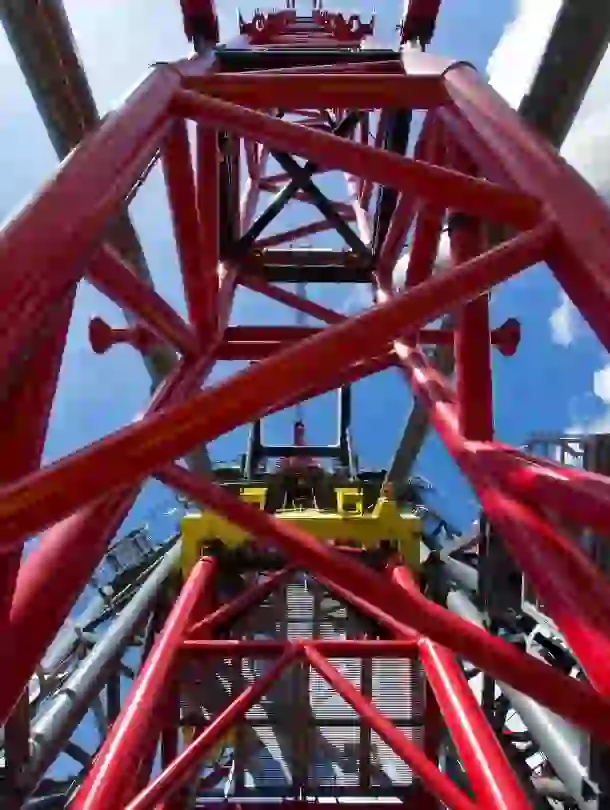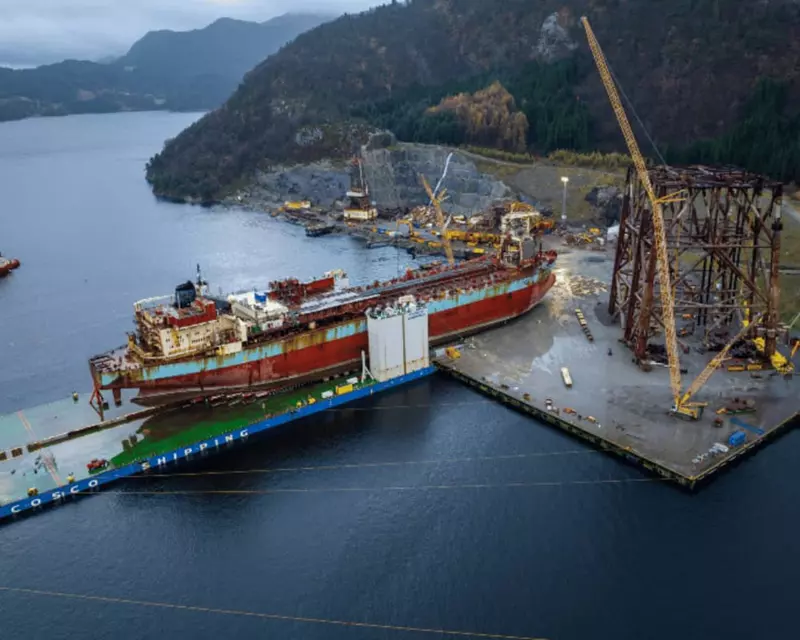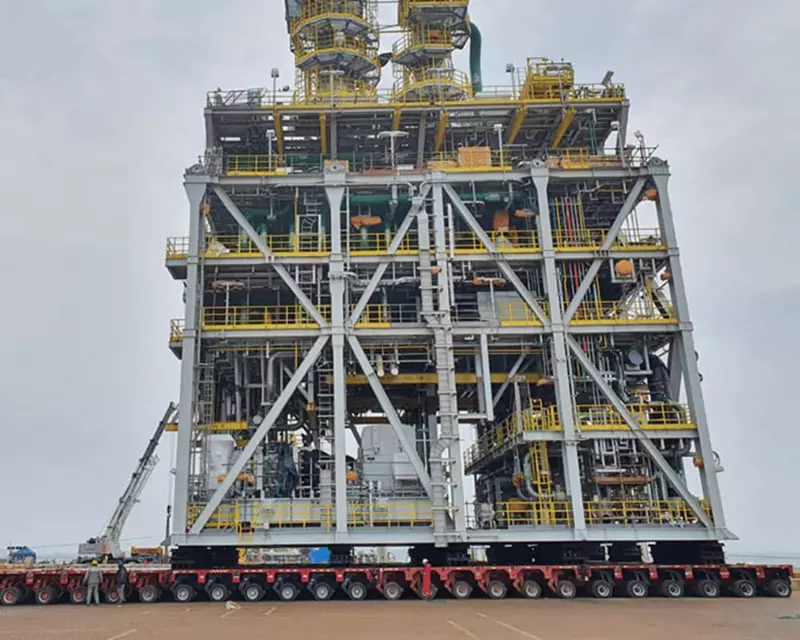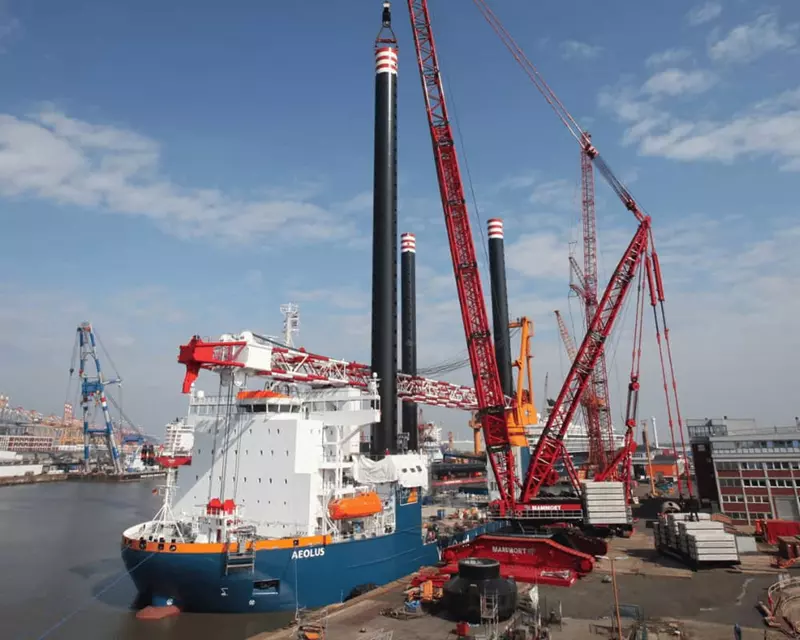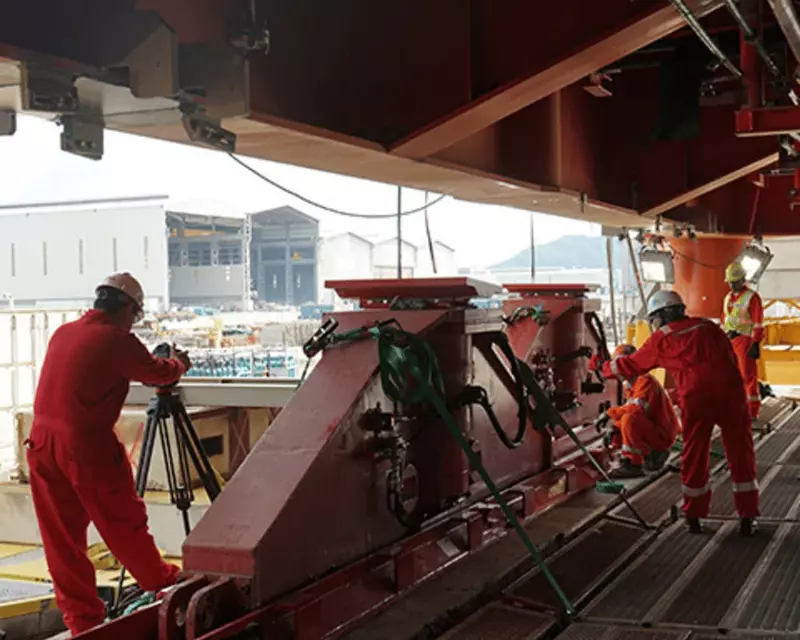
Sector:
Offshore
Expertise:
Load-in & load-out
Skidding
Jacking
Benefits:
Reduced preparation
Optimized schedule
Increased safety
Location:
Indonesia
The largest and most complex skidding operation from module to hull.
Providing more – and more reliable – electricity to Indonesian households is an important step toward Indonesia’s future prosperity.
This is why, in 2016, a consortium led by SAIPEM was commissioned to tap an important gas field off the Indonesian coastline. Essential to this project was a Floating Production Unit: a facility capable of processing, storing, and transporting gas to the mainland via underwater pipelines.
To save time, the unit, called Jangkrik, was built in two parts – the hull in South Korea and the topside module on the Indonesian island of Karimun. It was the first time anyone had ever attempted to skid and load-out a 14,273-ton module onto a Floating Production Unit hull.
Mammoet had engineered and executed complex skidding projects before, but Jangkrik was different. To begin with, at over 192 meters long and 46 meters wide, the Jangkrik module was massive. Secondly, early on in the process, the decision was made to construct the topside on land and skid the integrated module in its entirety onto the hull.
Not only would constructing the topside on land save a significant amount of time in building and testing, but it would also significantly increase the project’s safety by avoiding the challenges and risks of connecting and integrating smaller modules onto the hull at sea.
However, achieving this required collaborating closely with our partners, who needed to adjust the module’s design and engineering so that it could eventually be skidded into place. The hull design needed to be adjusted as well.
During preparations, construction, and load-out, nothing was left to chance. The solutions engineered focused on maximum precision and safety to ensure uninterrupted operations. A team of Mammoet Professionals deployed a hydraulic skidding system controlled by specially designed software. Built-in vertical jacks lifted the module off its construction supports where it was then skidded along 9 tracks, each 133 meters long. Once on the quayside, the module slowly skidded across 9 bridges and onto the hull. 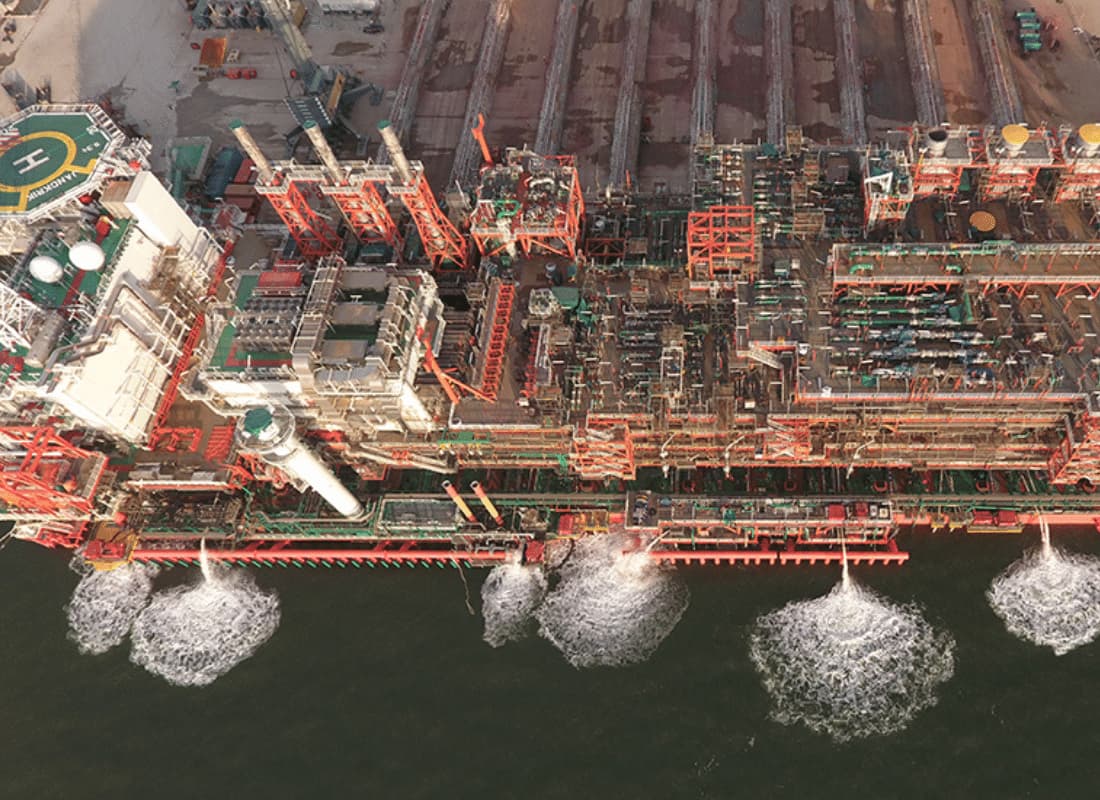
To offset Karimun’s wide tidal variations and keep the hull level with the quayside during load-out, Mammoet engineered two computer-controlled ballasting systems. The first is capable of monitoring and offsetting the tidal variations; the second manages the balancing of the hull.
To successfully load-out within Karimun’s tight tidal time frames required employing a pumping system capable of displacing 56,000 cubic meters of water an hour. With no room for error, a crew of Mammoet professionals confidently inched the massive module onto the awaiting hull.
The Jangkrik project is a benchmark of precision engineering and proof that even 14,273-ton integrated topside modules can be assembled and installed in one go. By stretching the limits of modular construction and enabling faster, safer, and more controlled construction at a larger scale, Mammoet helped save their partners a significant amount of time and helped Indonesia fuel its future growth.
